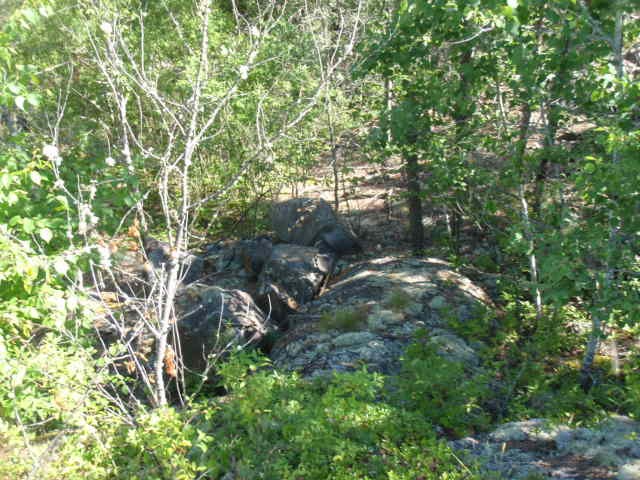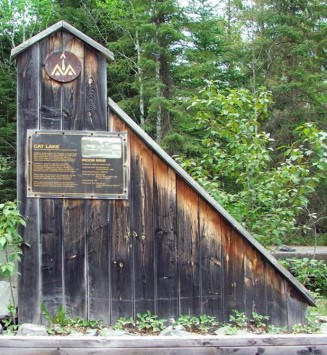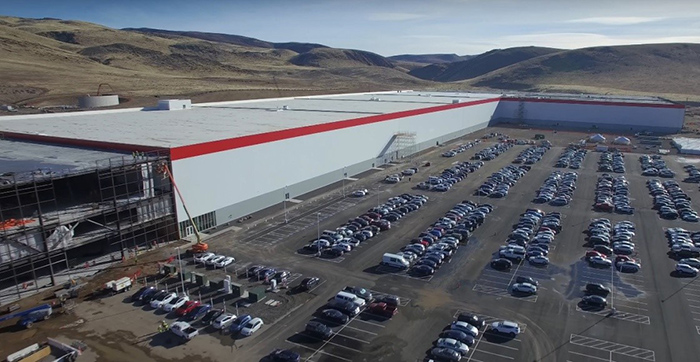In the global race to bring new lithium supplies on-stream to help fuel the green energy revolution, it’s a winning formula to have an early-mover advantage.
Plenty of lithium exploration start-ups suggest they have this competitive edge. But few really do. Instead, they face daunting odds in their quest to drill-define big enough deposits on which to even begin to consider building a mine.
Even if they succeed, they next have to concern themselves with the logistics of having to monetize deposits in remote, far-flung locations where the political climate can often turn chilly towards foreign miners.
However, QMC Quantum Minerals Corp. (TSX.V: QMC)(OTC: QMCQF) (FSE: 3LQ) has managed to get the jump on most of its peers by scooping up an historic, largely-untapped lithium mine located in mining-friendly Manitoba, Canada.
In so doing, it has avoided many of the pitfalls that face the vast majority of lithium explorers.
In essence, this Vancouver-based start-up is in the enviable position of having a prospective turnkey solution to mine one of the planet’s most sought-after commodities high-grade lithium.
That’s a big deal.
Once again, it means that most of the logistical, legal, and regulatory hurdles that other mining start-ups have to encounter in foreign mining jurisdictions simply don’t stand in QMC’s way - giving the company plenty of running room towards an expedited production decision.
Breathing New Life into a Mothballed Lithium Mine
QMC’s Irgon Lithium Mine Project, is located in an economically under-developed rural region of Manitoba, Canada and approximately 150 kilometres northeast of the provincial capital, Winnipeg.
Additionally, the Irgon Mine only covers a portion of QMC’s expansive property. This is significant because QMC not only has the historically identified, drill tested, spodumene mineralization (which is not currently a NI 43-101 compliant resource) defined within the Irgon Dike, but a search of old government assessment files covering past exploration within the area covered by the current property has determined that several more untested, potentially lithium-bearing pegmatitic dykes (slab-like rock structures) may exist on the property.
In other words, these other dykes - which generally strike parallel to the Irgon Mine dyke - may yet prove to be well-mineralized deposits in their own right; or they could be lateral extensions of the Irgon dyke.
Either way, company president Balraj Mann is excited about the prospect of adding a lot more tonnage to beef-up the company’s lithium assets.
“The Irgon Lithium Mine Project has a very high probability of rapidly increasing tonnage on strike and to depth,” he says.
To this point, work crews are stripping away overburden that covers the Irgon Dyke in preparation for drilling of this lithium-bearing structure in Q1 of next year. Not only will this drill program test the deposit’s potential to depth, but it will also target the strike extensions of Irgon’s known surface parameters.
Additionally, a recent channel sampling program across the width of the dyke has just been completed. The company is now awaiting assay results in the hopes that they will match or exceed the grades documented in the historic drill intersections and crosscut sampling confirming the presence of plenty on-surface, high-grade lithium (spodumene) mineralization.
In other words, the known deposit may yet prove to be a lot bigger than it was thought to be when it was originally commissioned as a mine in the 1950s.
Mann continues: “Also, there are additional dykes on the property to explore that offer significant potential to be either connected to the Irgon Mine’s known mineral inventory or to be parallel lithium-bearing structures.”

Pictured above: A close-up of one of QMC’s spodumene pegmatite dykes – a hard-rock source of lithium
Targeting a Turnkey Mining Operation
Here’s what’s really important: the commissioning of what was originally known as the Irgon Mine was put on hold in 1957 due to the unexpected onset of a decades-long slump in lithium demand. So the mine’s mineral inventory remains completely untouched.
Historic (non NI43-101 compliant) records reported by the mine’s original owner, the Lithium Corporation of Canada, outlined a preliminary resource of 1.2 million tons of spodumene-bearing pegmatite grading 1.51% Li2O (lithium oxide).

Pictured above: A roadside marker scaled replica of the historic head frame for the Irgon Mine
According to Mann, “Known mineralization at the Irgon Mine starts at surface and runs to a tested depth of 213 meters with the deepest hole drilled in 1953. Spodumene mineralization occurs disseminated within a continuous slab of lithium-enriched pegmatite and remains open below the 213-meter level.
Furthermore, historic metallurgical tests indicated an 87% recovery, which in turn produced a very high-grade concentrate averaging 5.9% lithium oxide.
This mineral reserve cited above is presented as a historical estimate only and uses historical terminology which does not conform to current NI43-101 standards. Consequently, the issuer is not treating the historical estimate as current mineral resources or mineral reserves.
But QMC aims to make the Irgon Mine compliant with modern-day reporting standards as soon as possible by way of a Q1 drill program that is intended to bring this mineral inventory up-to-date by way of a NI 43-101 compliant mineral resource.
Additionally, the mine may yet grow into a much larger deposit. For instance, a total of 25 historic drill holes outlined a strike length (the mineralization’s lateral axis/plane) of at least 365 metres (on only 20hectares, which comprised the original lease granted in the 1950s). The prospect of further developing the deposit along its continuous strike length will be determined by way of step-out drilling.
The appeal of the Irgon Lithium Mine Project is sweetened by the fact that the lithium mineralization commences directly on surface. This means some of it should be amenable to relatively low-cost, open-pit (quarry-like) ore extraction methods – especially if the deposit grows to depth and along its northeast trending strike length.
Additionally, a complete mining plant was installed on the site in the early 1950s, which included a 500-ton-per-day mill. Even though this equipment is no longer at the mine site, what’s of paramount importance is that an underground mining complex of underground shaft, drifting and crosscuts, although currently water filled, still exist.
This development includes a three-compartment shaft sunk to a depth of 74 metres. In addition, 341 metres of underground drifting parallel to the dike was established off the 61-meter level. From this drifting, six crosscuts were punched through the mineralized dyke to test the width and lithium grade of the Irgon Dyke at this depth.
At some point, the presence of this underground network will allow QMC to recover a bulk sample that would be sizeable enough to constitute pilot-scale production. It will also be used to complete a full metallurgical assessment of the mineralization.
The odds in favour of revitalizing this small mine are also supported by the presence of a provincial highway that was originally built for access to the Irgon Mine in 1956 and runs right through QMC’s property. In other words, this represents a major cost saving in terms of getting the mine’s anticipated future output to the US and world markets.
Moreover, most of the other necessary regional infrastructure for a mine to operate – such as water and an electricity grid – is already in-place due to the long-standing existence of the TANCO lithium/tantalum/cesium mine located only 20 kilometres to the south.
All of these favourable factors boost the odds in favour of the Irgon Lithium Mine Project becoming an economically viable success story.
Why Tesla Motors Needs Canadian Lithium
Tesla Motors’ vaulted ambitions of producing 500,000 electric cars by next year will fall flat without a steady and readily-available supply of the metal lithium. This is why its visionary leader, Elon Musk, says Tesla would “produce more lithium ion batteries than all other factories in the world combined.”
With a $5.5 billion “giga-factory” underway in the Nevada desert, Musk has publicly stated his commitment to sourcing North American supplies of lithium.

Pictured above: Tesla’s giant giga-factory gradually comes to life
On the one hand, this is intended to garner political backing in the US. On the other hand, it’s a strategic move intended to ensure long-term supply security (as opposed to being reliant on the world’s few major lithium producing nations, which include China).
Yet North America currently only hosts one lithium mine, which is located in Nevada in close proximity to Tesla’s under-construction $5.5 billion, 10-million-square-feet factory (a structure which is approximately one-mile-long).
Known as the Silver Peak Mine, it can only supply a fraction of Tesla’s burgeoning lithium needs. So the race is on to bring new mines on-stream across North America. QMC already has a good head start over much of the competition in both Canada and the US.
Investment Summary
QMC has been a very strong performer in recent months due to its rising star among Canada’s vanguard of lithium explorers.
Now that exploration and development work is getting underway in earnest, the company should have plenty of news flow in the coming months to support its buoyant share price.
What about the big picture potential?
The prospect of a lucrative, revitalized lithium mine coming on-stream may well be in the offing – and on an expedited timeline.
Yet, the benefits of this vision becoming a reality transcend any financial windfall for investors. In fact, the advent of an expanded, refurbished mine at the Irgon Lithium Mine Project would certainly boost Manitoba’s rural, non-farming economy.
At the same time, a larger revitalized mine could play an important role in powering North America’s electric automobile revolution.
Keep in mind that Nevada can be a problematic region for sourcing lithium as it comes with inherent environmental issues. For instance, the Silver Peaks Mine – which extracts lithium from brine ponds – has run afoul of the Environmental Protection Agency for harming wildlife.
However, this isn’t the kind of problem that would affect a hard rock mining project like the Irgon Lithium Mine. In fact, it’s worth noting that battery manufacturers that are desperate for uninterrupted, long-term North American lithium supplies need them to be free of any controversy.
This all explains why it is imperative for new environmentally-conscious producers to meet a projected future supply deficit. Certainly, QMC is a front-runner to become one of them.
In so doing, the company will have a chance to brandish its “green” credentials by helping to set society on a path toward a low-carbon energy future.
With such a company-maker opportunity quickly emerging, QMC’s share price is likely to continue its powerful upward trajectory in the coming year.
In fact, investors may have an opportunity for a “home-run” win like the one that’s already being enjoyed by shareholders of certain other high-flying lithium developers that also enjoy an early-mover advantage.
About the Author: Marc Davis has a deep background in the capital markets spanning 25 years. He is also a longstanding financial journalist, having worked for leading digital financial news agencies in North America and in London’s financial centre. He is also a former business reporter for CBC Television. Over the years, his articles have also appeared in dozens of digital publications worldwide. They include USA Today, CBS Money Watch, Investors’ Business Daily, the Financial Post, Reuters, National Post, Google News, Barron’s, China Daily, Huffington Post and AOL.